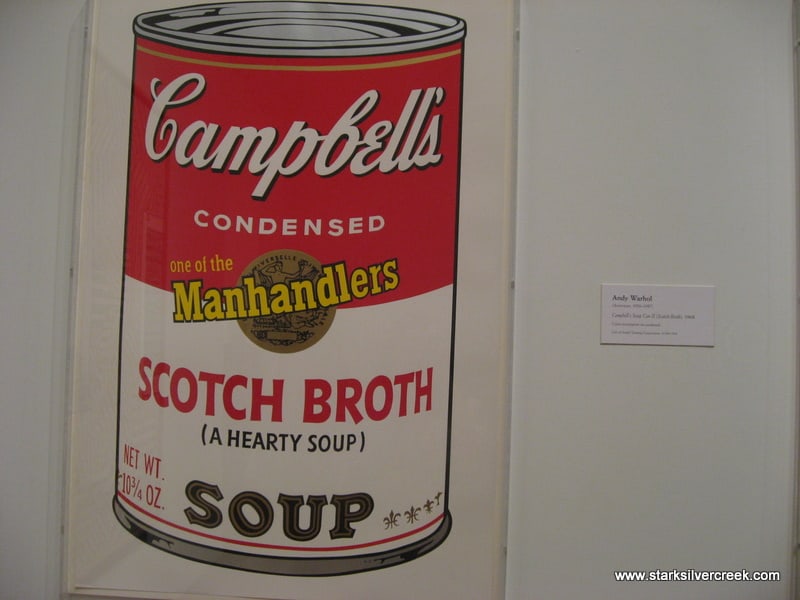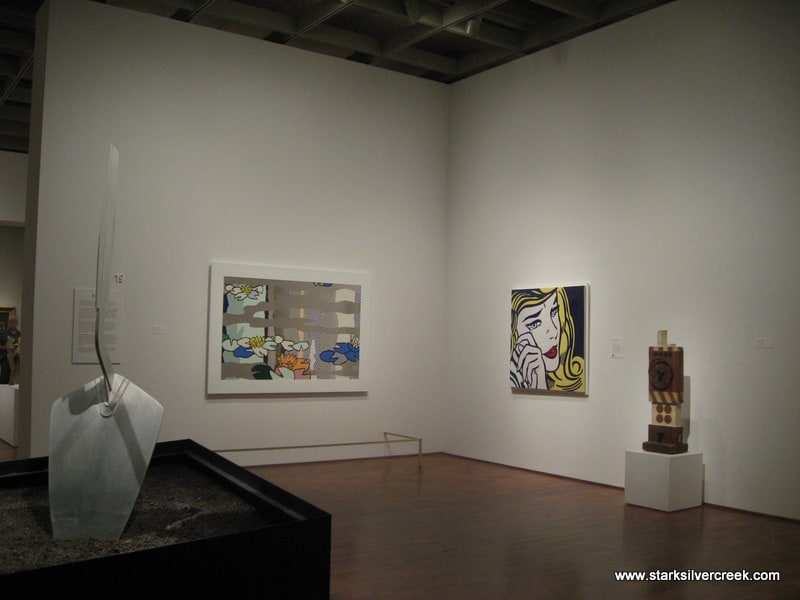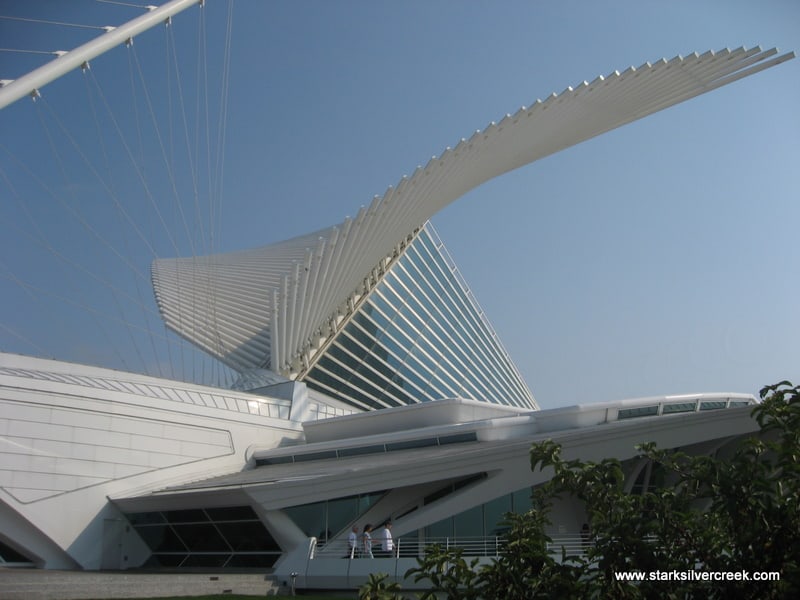
One of the main attractions of the art museum is its architecture – it is a work of art in its own right.
While in Milwaukee two weeks ago for the Annual NASCIO conference, I was able to pop by the Milwaukee Art Museum for several hours before the Corporate Leadership Council luncheon that kicked off this year’s event for corporate members.
I was impressed with the breadth and calibre of art work in this museum which houses works from Warhol, Picasso, Monet, and Renoir as well as fine examples from different eras in art history. The art museum spans 3 stories with the majority of the works on the first floor. The real estate is segmented into smaller rooms each offering a taste of a different movement – if you like art you will feel like a kid in a candy store.
For those that have not been able to visit this venue, definitely check it out. The price of admission was $14. However, on the day I went, the temporary exhibit area was under construction so it was only $8 for admission and the audio tour was free. Not a bad deal.
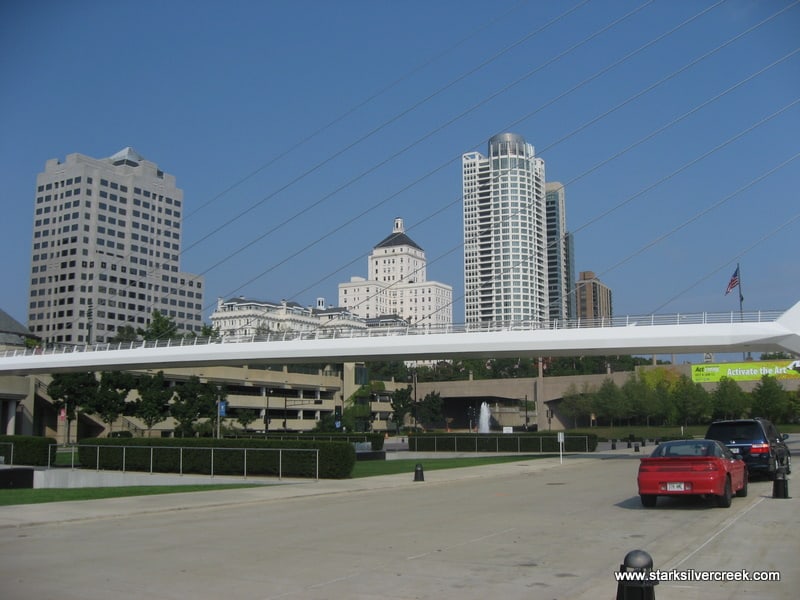
The view outside the Art Museum.
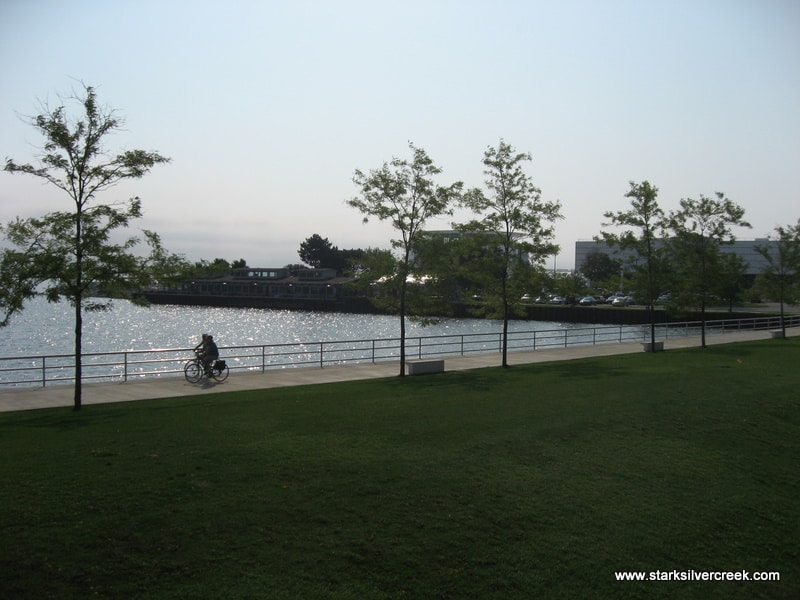
The museum is situated on waterfront against beautiful green space and a pedestrian path along the waterfront. Reminded me of something I would see in Vancouver, Canada.
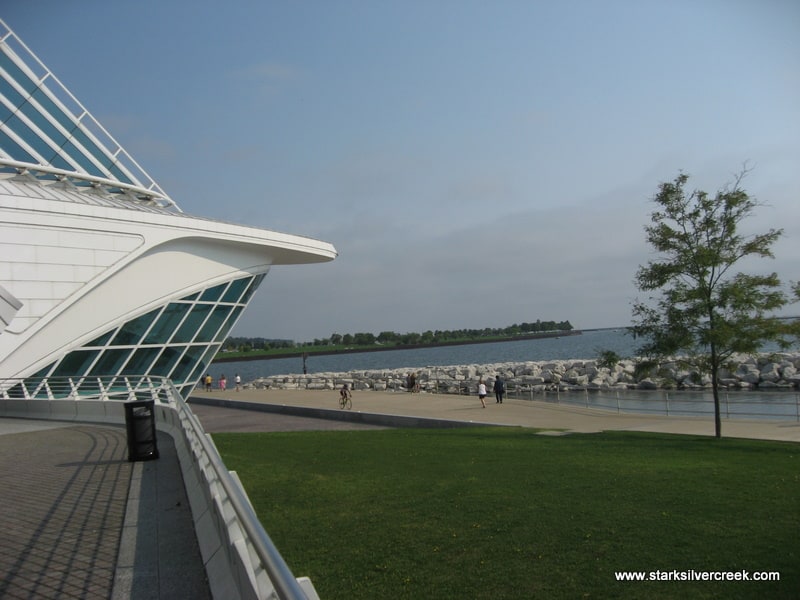
Another view of the museum against the waterfront. Also reminded me of the Sydney Opera House which is also white, dramatic and set against water.
Until you are able to make it there in person, let me take you on a tour of a couple of pieces of art work that I found really striking. This was the other thing I liked about the museum, they allowed photography as long as one didn’t use the flash which was fine since all the pieces were well lit.
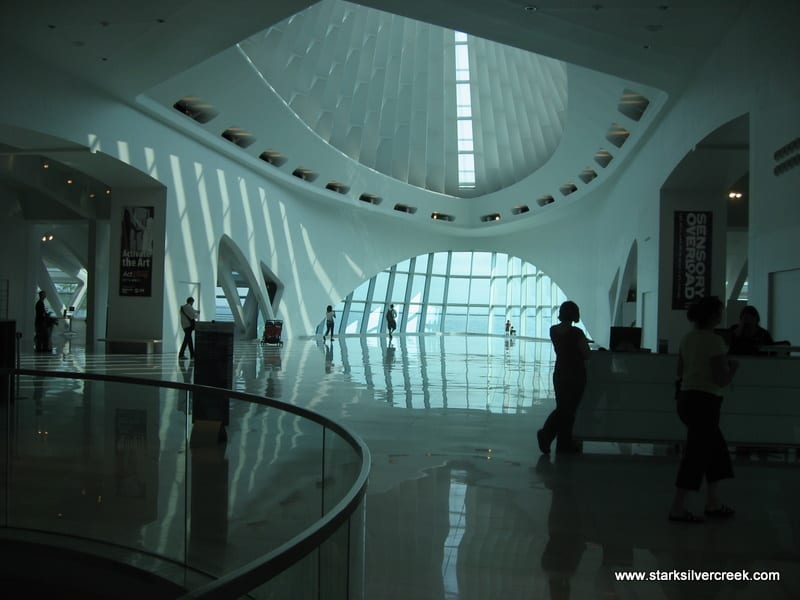
The inside is just as beautiful as the outside. White marble floors and white walls allow for the dramatic arches, views and artwork to stand out.

The hallway on the left after you enter the museum. The repeating arches result in a dramatic effect.
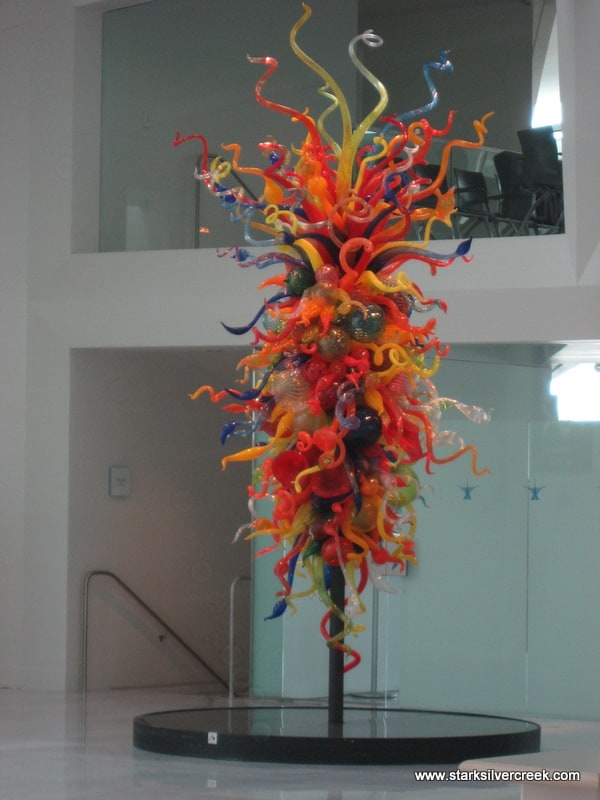
Colored glass sculpture on the right of the entrance.
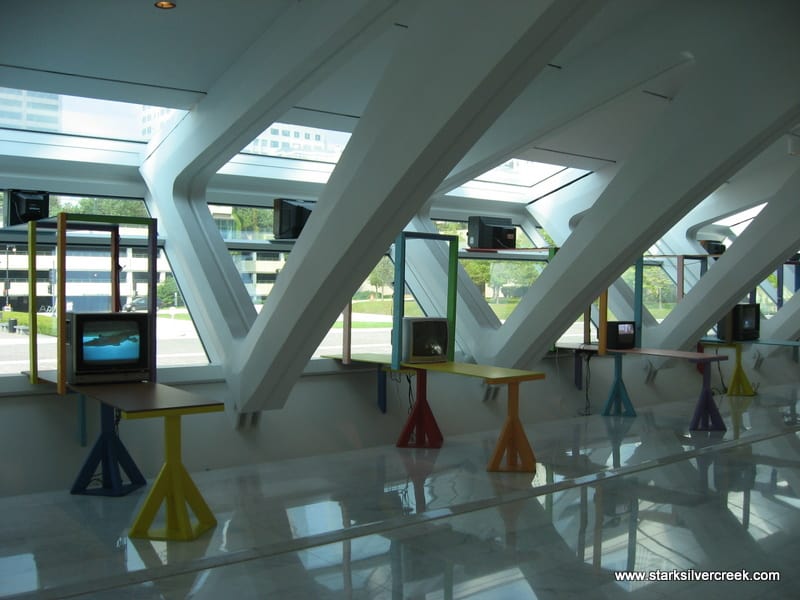
The hallway had this display which I thought was interesting enough to take a photo of.
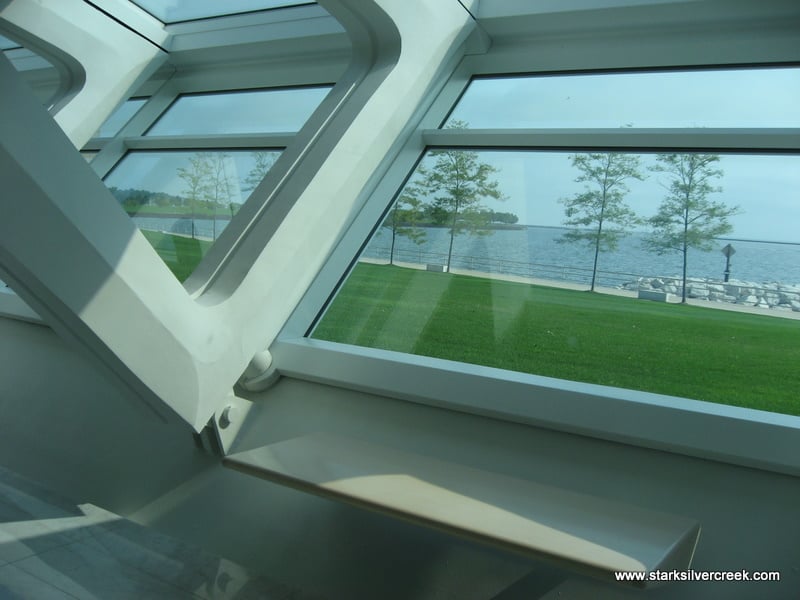
I have a thing for window seats and this is the first time I’ve seen a very modern take on the traditional window seat.
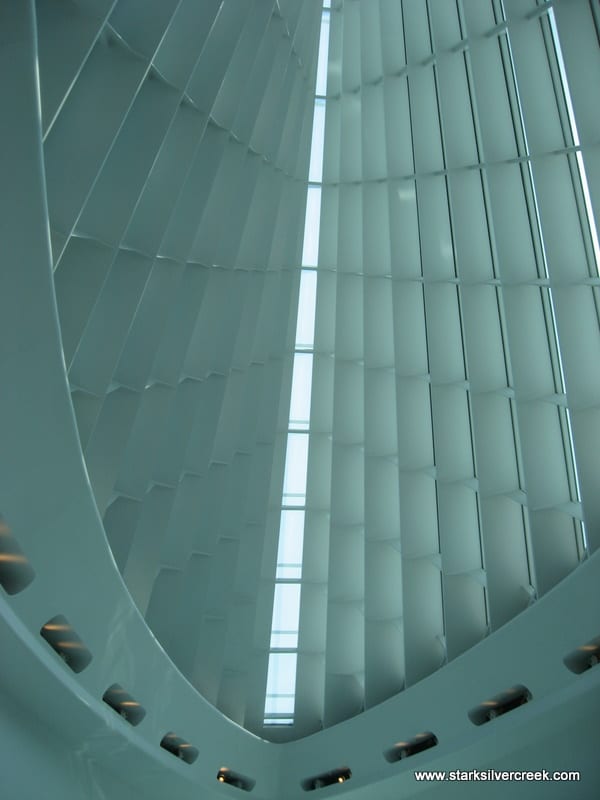
Stunning ceiling of the foyer.
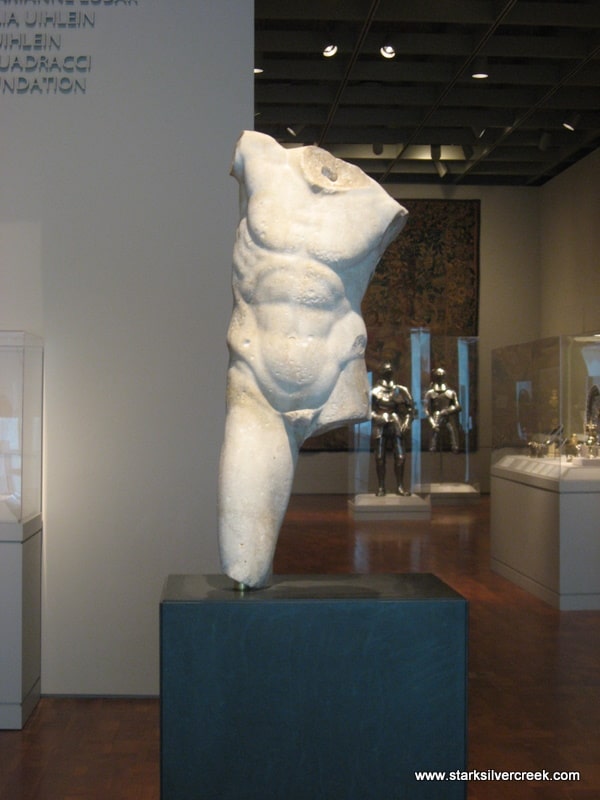
What would an art museum be without the obligatory torso from a Roman/Greek ruin?
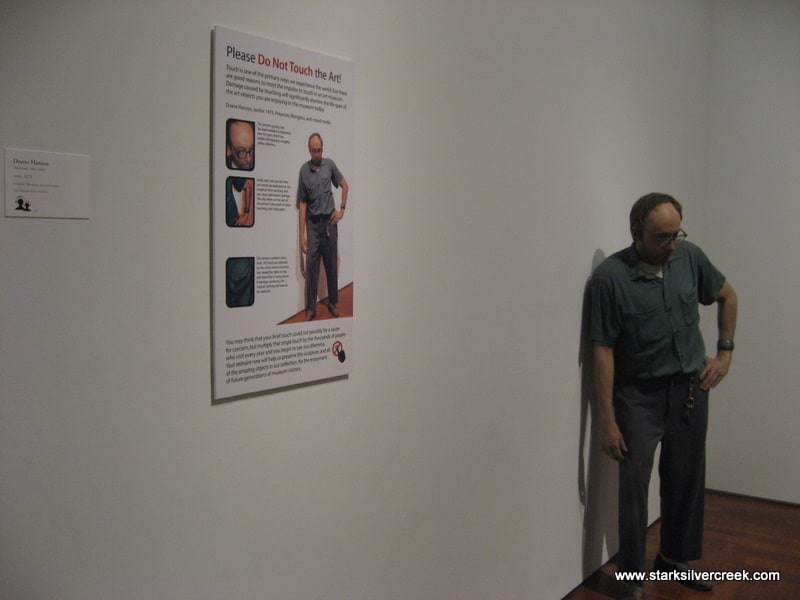
This sculpture caught my interest because it was so realistic I did a double take when I passed it. It was not only the detail in this figure down to the wisps of hair and crooked glasses, but also the casual stance that makes this sculpture so real.
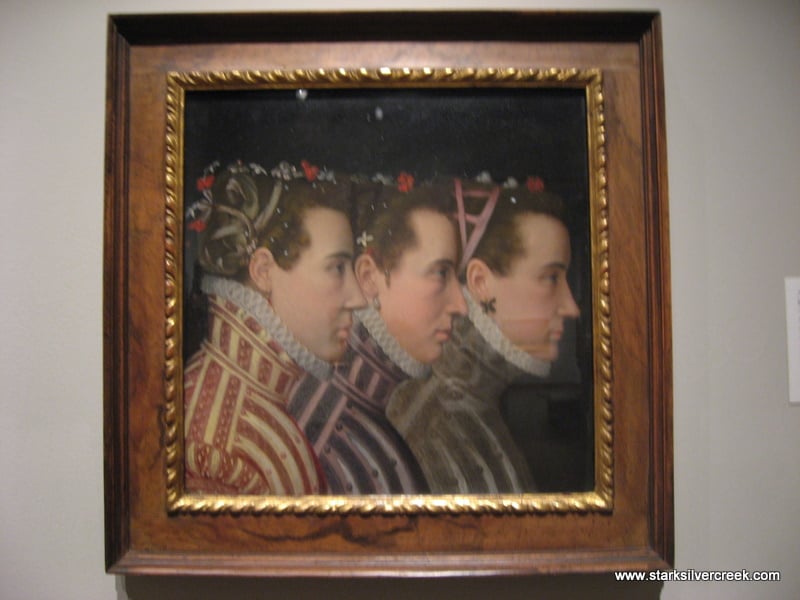
Triple Profile Portrait, ca. 1570. This portrait caught my eye because it was striking and unusual to have a portrait of three individuals in this posing in this manner. The note beside this painting suggests that these may actually be the minions, or boyfriends of French King Francois II.

Saint Francis of Assisi in His Tomb, 1630/34. If you see this painting in person at the museum, it is very haunting. Painted by Francisco de Zurbaran, this is a painting of a vision he had of the saint floating above his tomb.
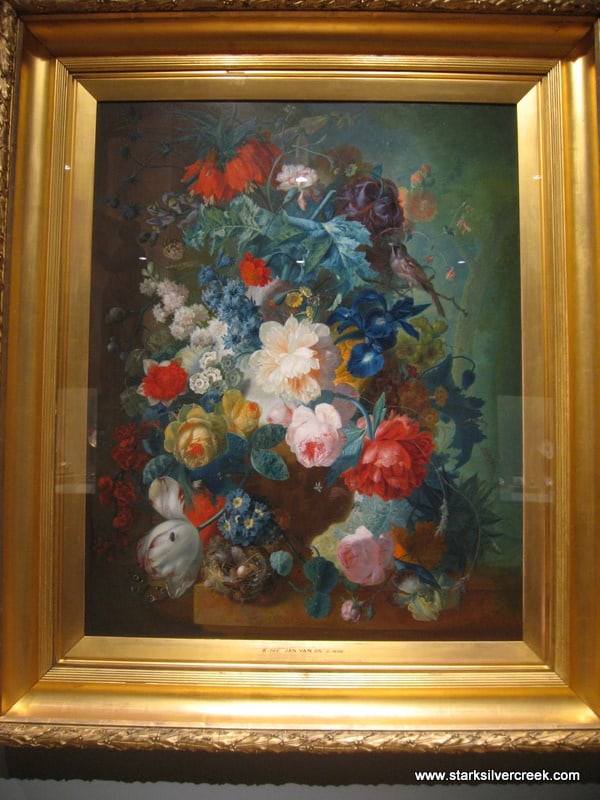
Flowers in a terra-cotta vase, after 1780. Very impressive still-life with over 20 types of flowers and many types of insects depicted in this painting.
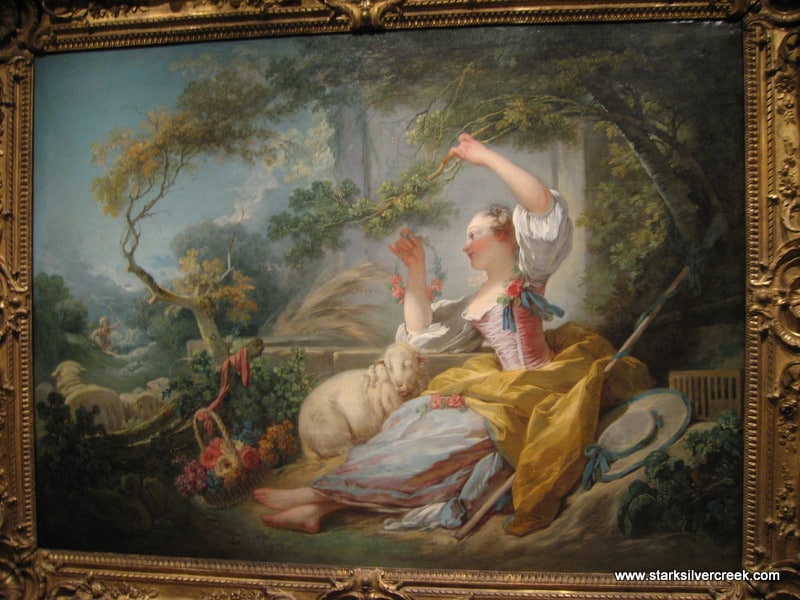
The Shepherdess, ca. 1750-52. The shepherdess depicted here is awaiting her lover. This pastoral scene shows the transition from paintings displayed in public areas to make a social or religious statement to paintings commissioned for the private home that highlights more “frivolous” themes.
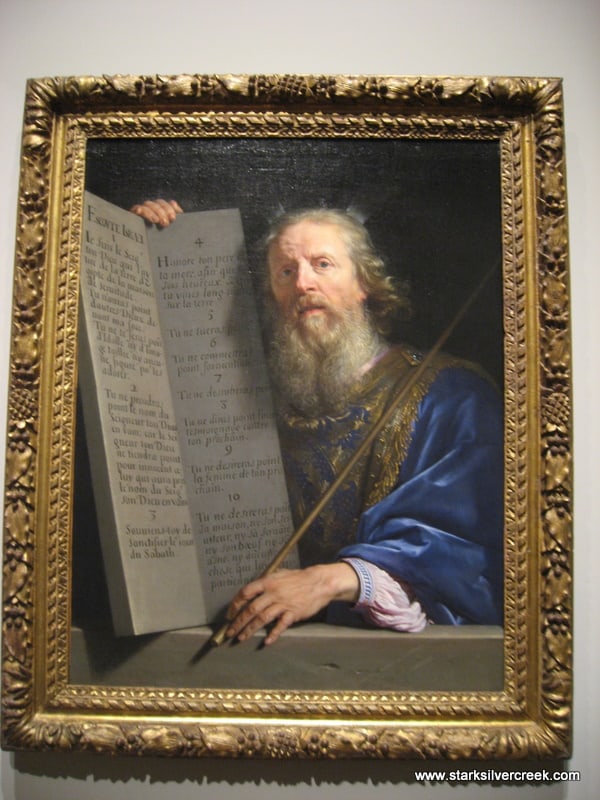
Moses and the Tablets of the Law, ca 1648. I found this painting enchanting because of the artist’s attention to detail. You can’t tell from this photo but even the most minute details are taken care of such as the dirt under Moses’ fingernails. The 10 commandments are shown here in French instead of Latin as the artist wanted to emphasize the relevance of the laws to French society.
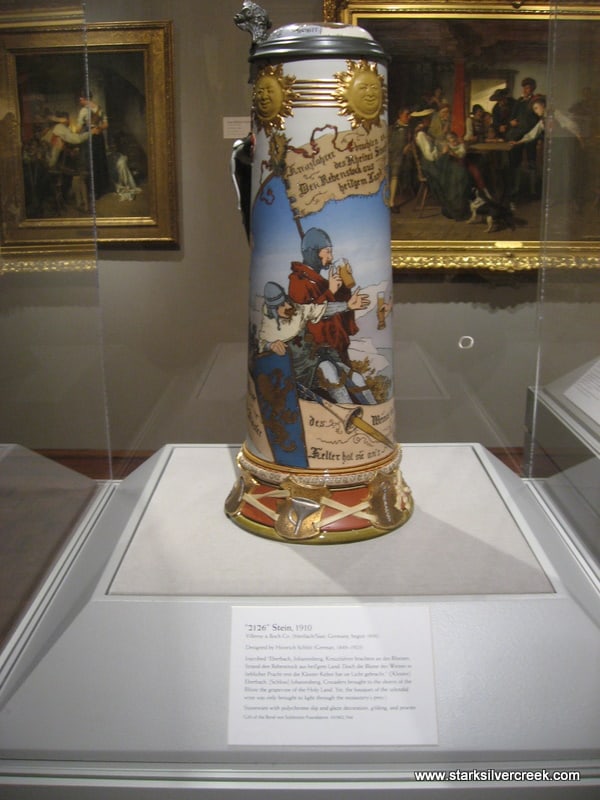
“2126” Stein, 1910. A very impressive and large beer stein. An artifact of the Beer Hall Culture of Germany. I was impressed with an entire room in the art museum devoted to this alcoholic beverage.
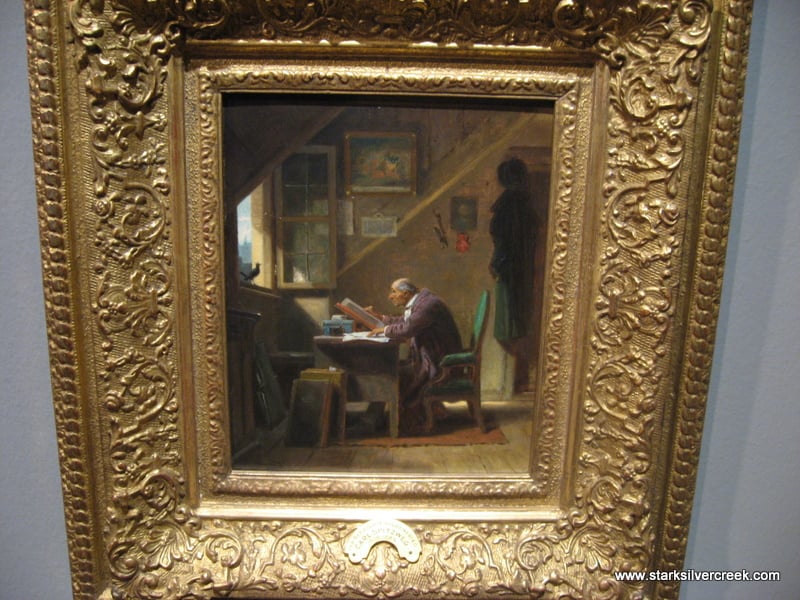
The Unexpected Interruption, ca. 1855. This painting by Carl Spitzweg was one of my favorite paintings in the museum. It is a tiny painting full of details and whimsy.
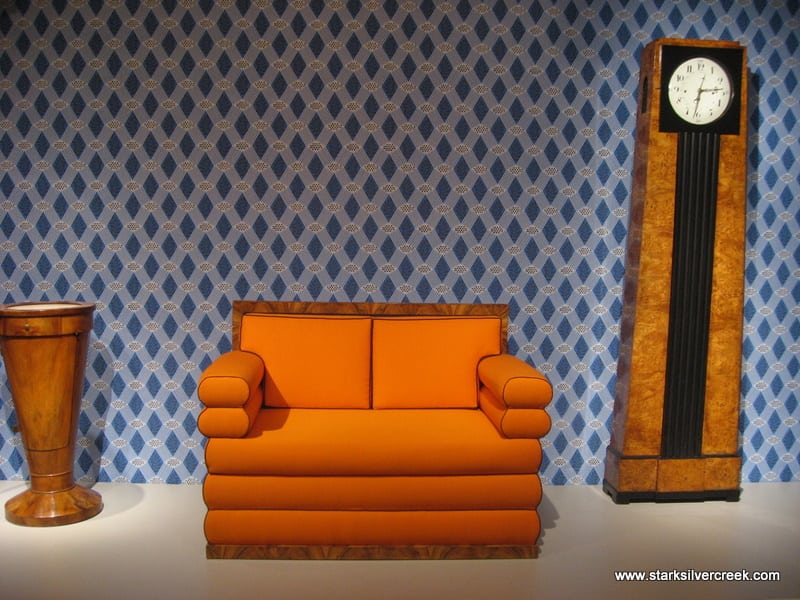
Settee, 1825/30. This startling piece of furniture caught my attention because of its bright orange color which is only make more intense by setting it again a patterned blue wallpaper and the ultra modern lines.
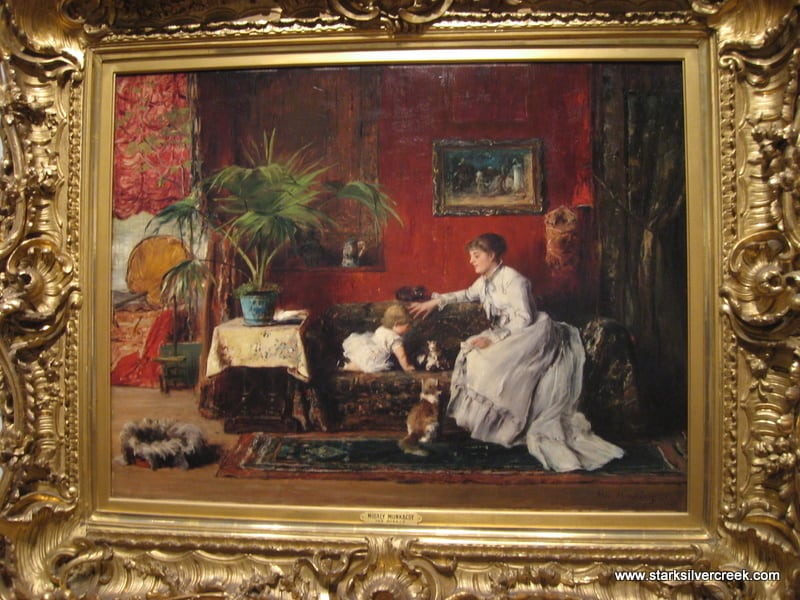
The Rivals (Little Kittens), 1885. I liked this painting because of the textures and the white gown against the rich red walls.
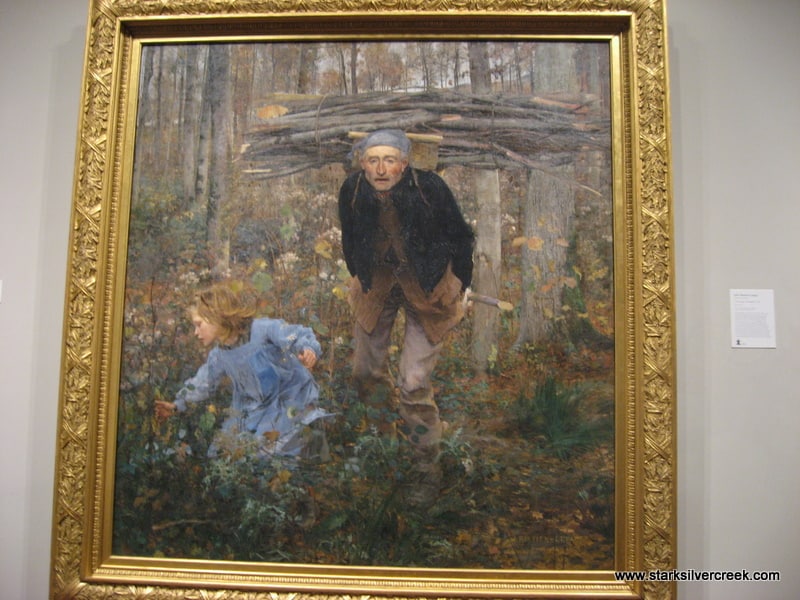
Le Pere Jacques (Woodgatherer), 1881. This painting has a sweet and sad contrast between the older generation and the younger generation. The old woodsman represents the weariness of old age while the girl in the blue dress symbolizes the vibrancy and innocence of youth.
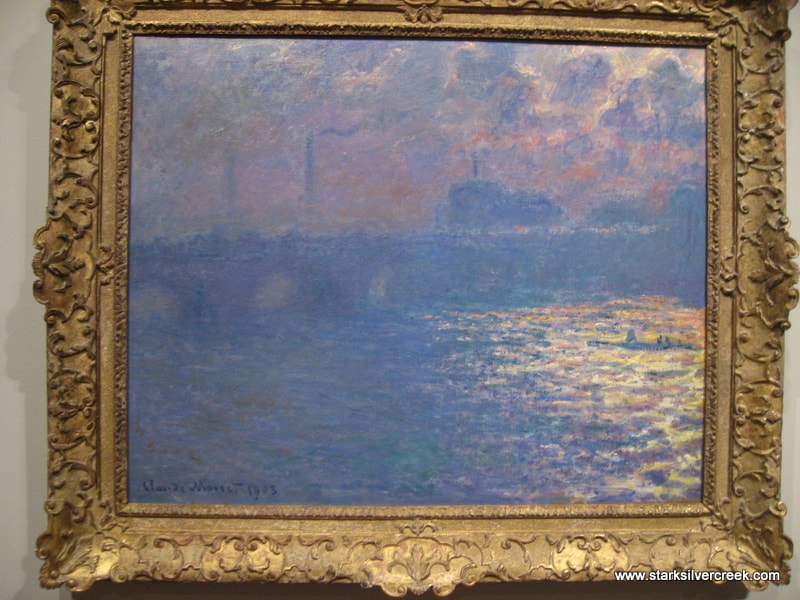
Waterloo Bridge, Sunlight Effect. Ca 1900. Famous work by Claude Monet of the Impressionist era. One my favorite periods in art. Every time I look at an ultra modern piece of artwork and “don’t get it” I try to remind myself that at the time this was revealed it, many also didn’t “get it”.
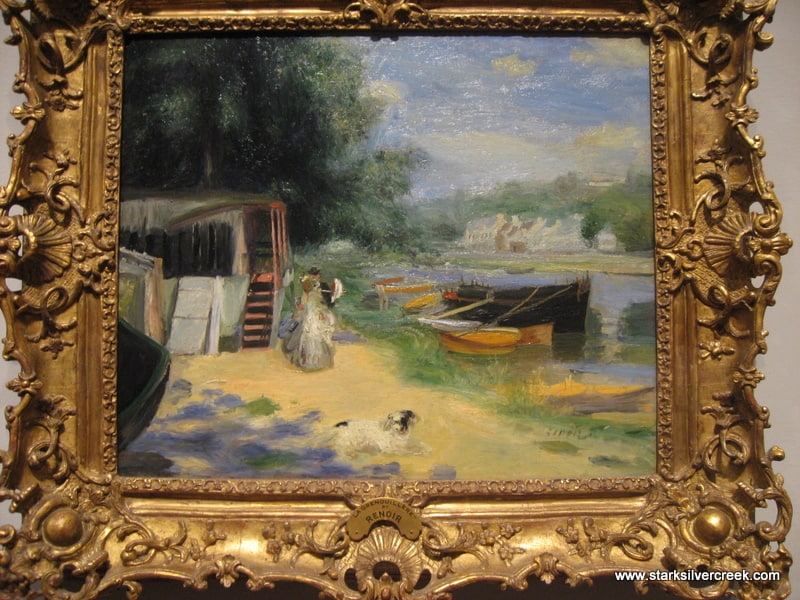
View of Bougival, 1873. Just snapped this photo because I liked this painting.
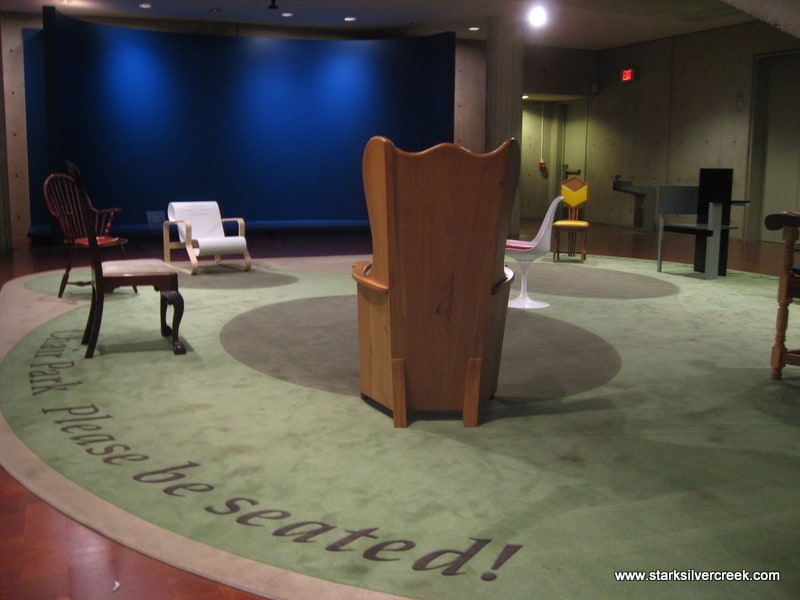
Interesting chair collection on the lower floor of the museum.
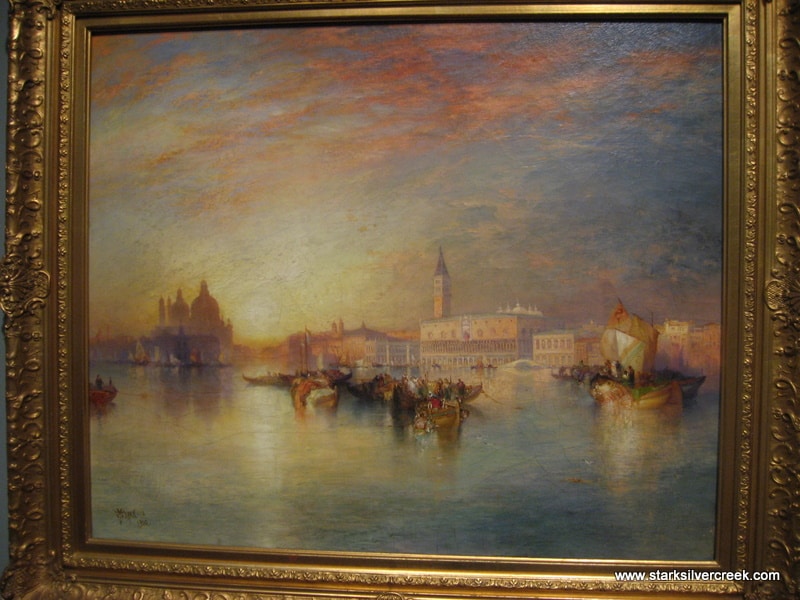
Tranquil Day in Venice, 1990. I liked the treatment of light in this painting.
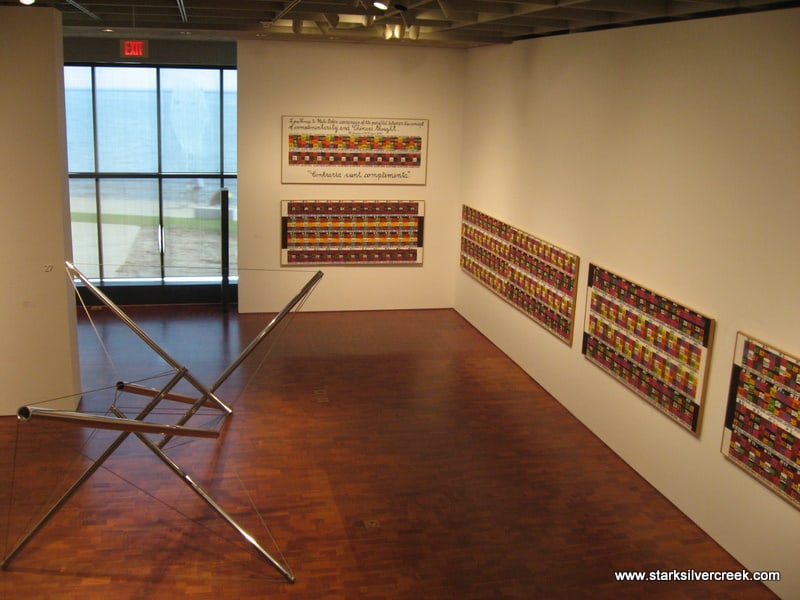
Looking down at the first floor as I climb the stairs to the second floor of the museum.
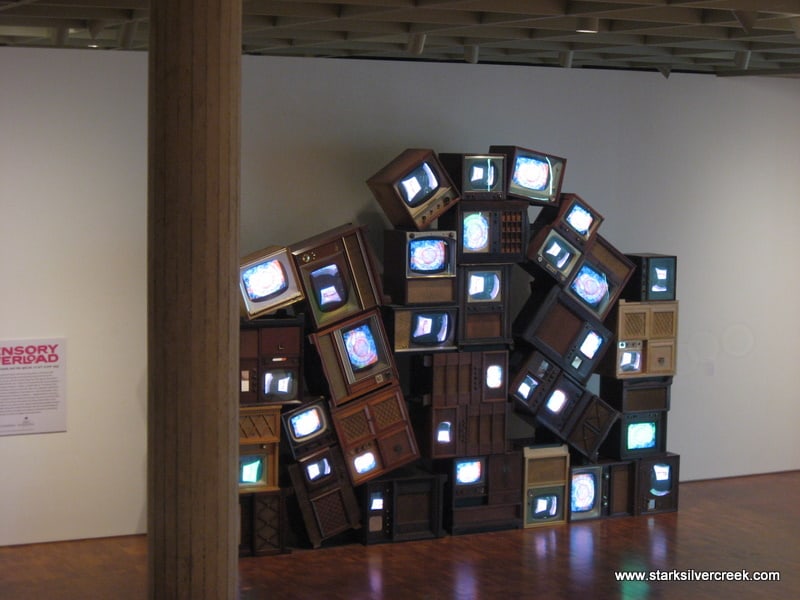
This work is called “Sensory Overload” I think. Occasionally a disturbing phrase could be heard coming from this group of televisions such as “I hate myself…”
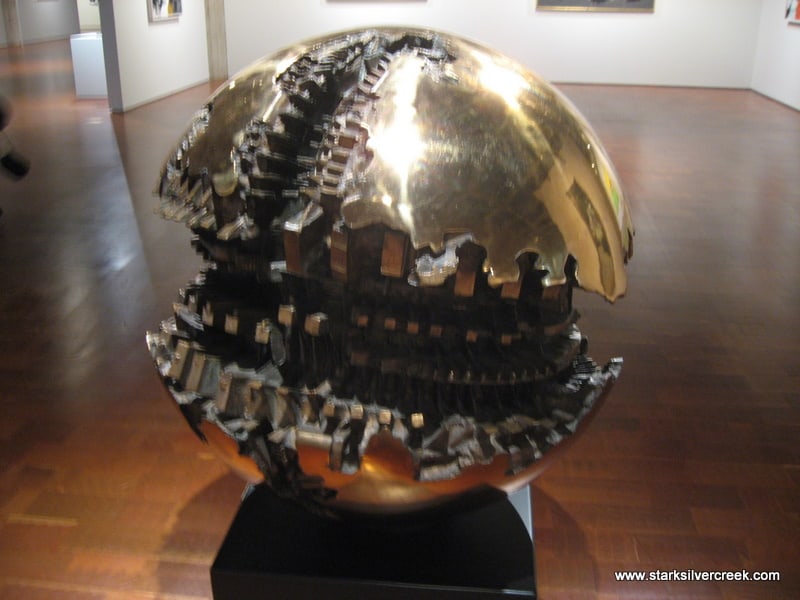
This globe looks like a smaller version of a piece of artwork I saw at the Vatican museum.
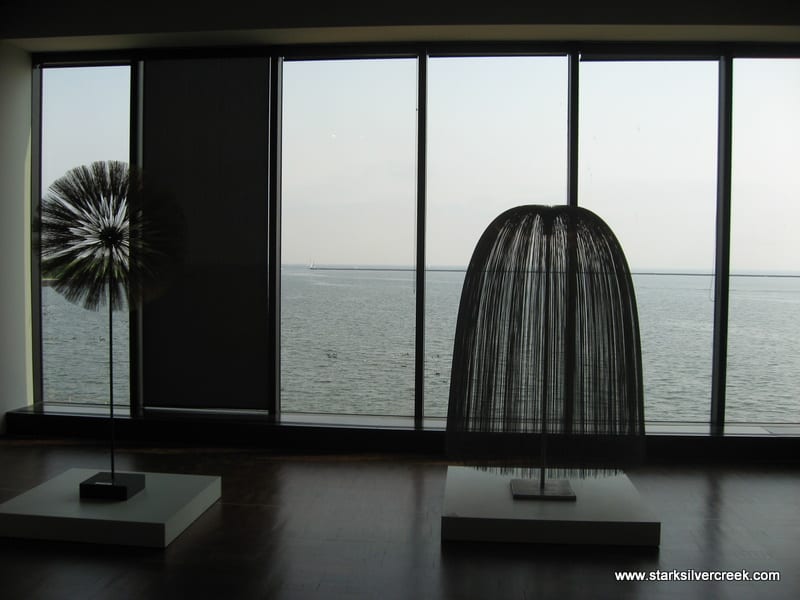
Thought these sculptures against the water would make an interesting photo.
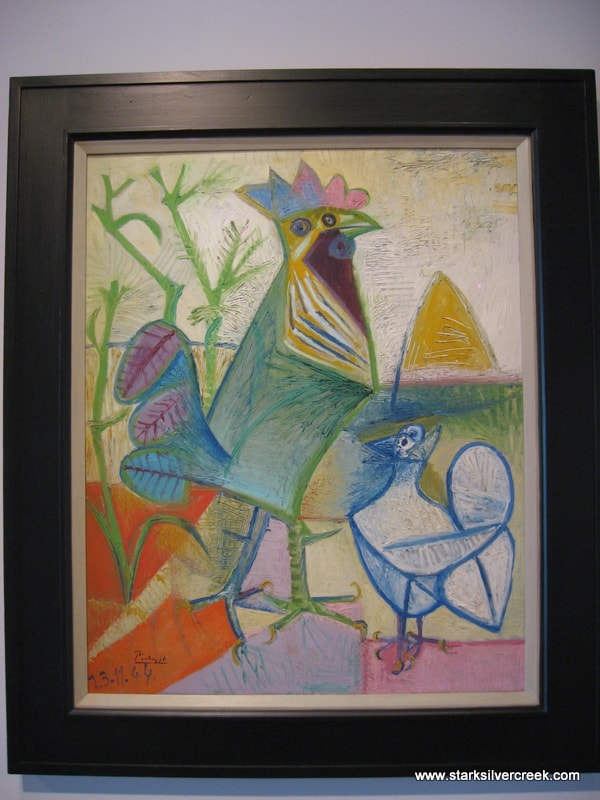
The Cock of Liberation by Pablo Picasso. The one and only Picasso in this museum collection. It is located on the third floor and it took me some time to find it. I wanted to see it even though I have never truly been a fan of Picasso myself. This work was completed after the Nazi troops evacuated Paris in November 1944. The rooster symbolizes France, the dove is a symbol for peace. Hence this painting declares a new era of peace and freedom in France. I can see the significance of the piece historically, as a piece of artwork I am still at a loss.
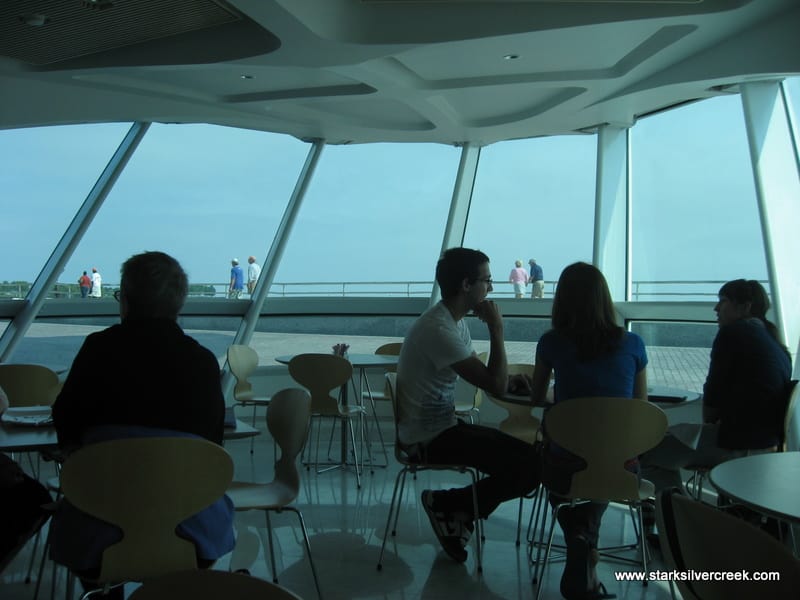
View outside from the Art Museum cafe where I stopped for a bite.

View of the cafe which has a style consistent to the rest of the museum.
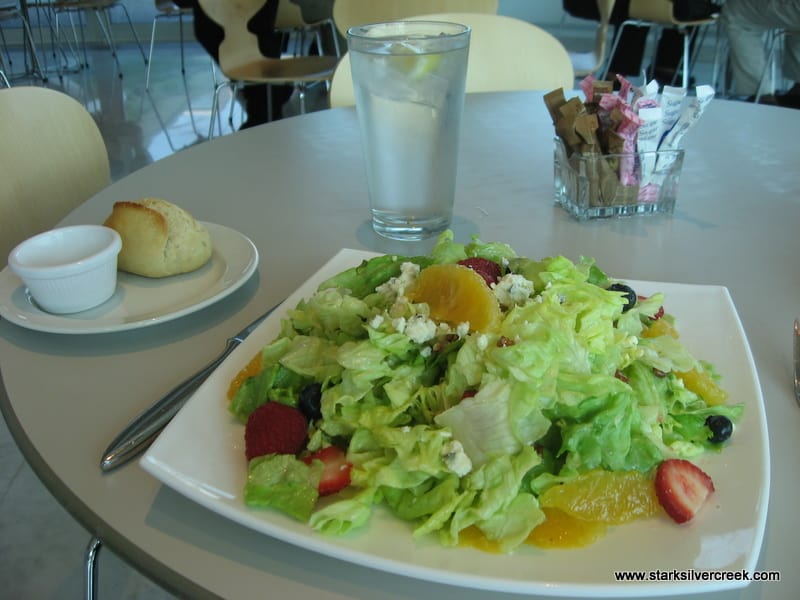
My summer berry salad which was surprisingly delicious. I wolfed it down quickly before I had to catch a taxi back to NASCIO for the Corporate Leadership Council meeting.
If you are ever in Milwaukee, definitely check this out. If I had more time I would have strolled outside the Art Museum as well. There are beautiful walkways and park areas. It was a pity I had to leave as the day I went the weather was perfect.

